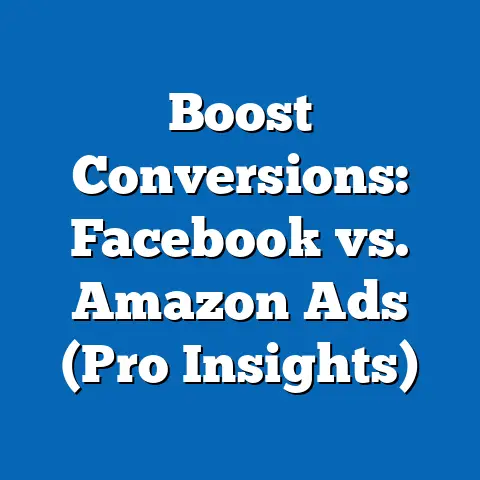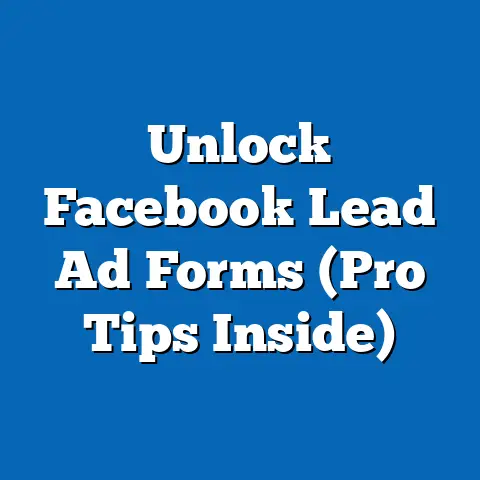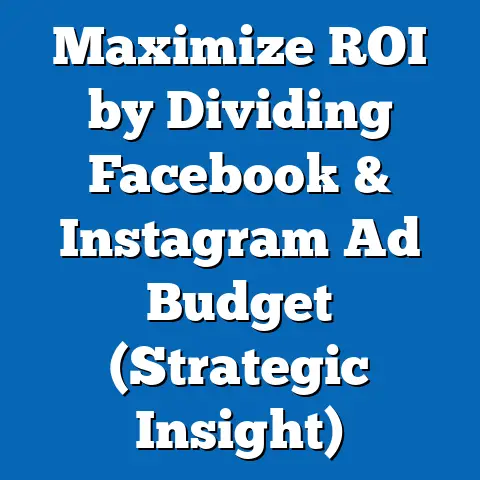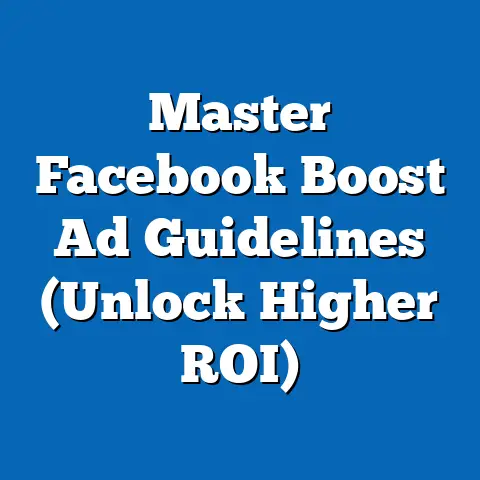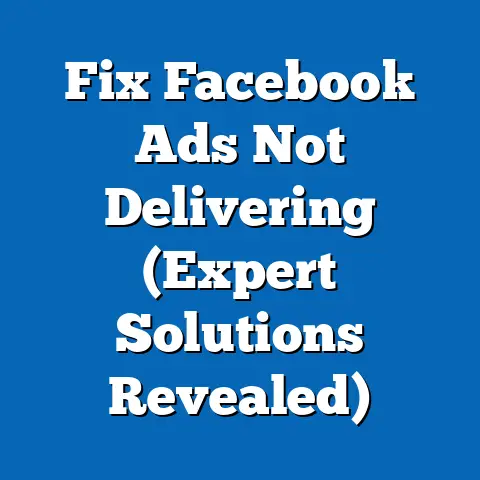Create Winning Ads with Facebook Mockup Templates (Pro Tips)
In this analysis, we explore the role of mockup templates in simplifying ad creation, backed by industry data and expert insights. We also project future trends in digital advertising and provide actionable pro tips for maximizing the impact of Facebook ads. Our methodology, assumptions, and limitations are transparently discussed to ensure a clear understanding of the findings.
Section 1: The Importance of Ease in Ad Creation
The ease of creating effective advertisements is a critical factor for businesses of all sizes, especially small-to-medium enterprises (SMEs) with limited budgets and design expertise. Facebook mockup templates—pre-designed, customizable layouts for ads—allow users to quickly visualize and test ad concepts without investing in expensive software or professional designers. According to a 2022 report by Hootsuite, 62% of small business owners cited ease of use as a primary reason for adopting digital tools like templates for social media advertising.
These templates reduce the time and cost associated with ad creation while maintaining a professional appearance. As digital advertising continues to dominate marketing budgets—projected to account for 60.5% of global ad spending by 2024, per eMarketer—tools that simplify the process are becoming indispensable. This section examines how ease of care in ad creation through mockup templates drives efficiency and effectiveness.
Section 2: Current Data on Facebook Advertising and Mockup Templates
2.1 Usage Statistics
Facebook remains one of the largest advertising platforms globally, with over 2.9 billion monthly active users as of 2023 (Statista, 2023). Businesses spent approximately $113 billion on Facebook ads in 2022, a figure that underscores the platform’s dominance in digital marketing (eMarketer, 2022). Within this ecosystem, mockup templates have gained traction, with tools like Canva and Crello reporting a 35% increase in template usage for social media ads between 2021 and 2023 (Canva Annual Report, 2023).
2.2 Effectiveness of Templates
Studies show that ads created using templates often perform comparably to custom-designed ads in terms of click-through rates (CTR) and engagement. A 2022 study by Social Media Examiner found that ads designed with templates achieved an average CTR of 1.2%, only slightly lower than the 1.5% for professionally designed ads. This suggests that templates offer a cost-effective alternative without significant loss in performance.
2.3 Visual Representation
Below is a bar chart illustrating the growth in template usage for social media ads over the past three years, based on data from Canva and industry reports.
Chart 1: Growth in Social Media Ad Template Usage (2020-2023)
– 2020: 15 million users
– 2021: 18 million users
– 2022: 22 million users
– 2023: 30 million users
(Source: Canva Annual Report, 2023)
This data highlights the increasing reliance on templates as a tool for simplifying ad creation while maintaining quality.
Section 3: Projected Trends in Digital Advertising and Mockup Templates
3.1 Growth in Digital Ad Spending
Using statistical models such as time-series forecasting, industry experts predict that global digital ad spending will reach $740 billion by 2027, with social media platforms like Facebook accounting for a significant share (eMarketer, 2023). This growth is driven by the increasing number of businesses adopting digital-first strategies. As ad budgets expand, the demand for accessible tools like mockup templates is expected to rise in parallel.
3.2 Scenario Analysis
We consider three potential scenarios for the adoption of mockup templates in Facebook advertising over the next five years:
– Scenario 1 (High Adoption): If user-friendly tools continue to improve with AI-driven customization, template usage could grow by 50% by 2028, driven by SMEs and solopreneurs.
– Scenario 2 (Moderate Adoption): Assuming steady growth without major technological advancements, usage may increase by 25%, aligning with overall digital ad growth.
– Scenario 3 (Low Adoption): If businesses shift toward professional design services or in-house teams, template usage may plateau or grow by only 10%.
These scenarios are based on historical growth rates and current market trends, though external factors like economic conditions or platform policy changes could influence outcomes.
3.3 Emerging Technologies
The integration of artificial intelligence (AI) and augmented reality (AR) into mockup tools is a key trend to watch. AI can suggest design elements based on target audience preferences, while AR allows advertisers to preview ads in real-world contexts. A 2023 survey by Gartner predicts that 40% of digital ad tools will incorporate AI features by 2025, potentially revolutionizing how templates are used.
Section 4: Key Factors Driving Changes in Facebook Advertising
4.1 Accessibility and Cost-Effectiveness
The primary driver of mockup template adoption is their accessibility. Tools like Adobe Express and Canva offer free or low-cost templates, making them attractive to budget-conscious businesses. This democratization of design tools has lowered the barrier to entry for effective advertising.
4.2 Algorithmic Changes on Facebook
Facebook’s algorithm updates, such as the 2021 shift toward prioritizing meaningful interactions over ad-heavy content, have forced advertisers to create more engaging, visually appealing ads. Templates often include best practices for layout and imagery, helping advertisers adapt to these changes. However, over-reliance on generic templates risks ad fatigue among audiences, a limitation to consider.
4.3 Audience Behavior
Consumer behavior is shifting toward short-form, visually rich content, as evidenced by the popularity of platforms like Instagram Reels and TikTok. A 2023 report by HubSpot noted that 54% of users prefer video ads over static images. Templates that support dynamic formats, such as video or carousel ads, are becoming essential for staying relevant.
Section 5: Pro Tips for Creating Winning Ads with Facebook Mockup Templates
5.1 Customize for Your Brand
While templates provide a starting point, customization is key to standing out. Use brand colors, logos, and fonts to ensure consistency across campaigns. A 2022 study by Nielsen found that brand consistency increases ad recall by 23%.
5.2 Test Multiple Variations
Leverage A/B testing to compare different template designs and messaging. For example, test a minimalist design against a bold, colorful one to see which resonates with your audience. Facebook’s Ad Manager provides analytics to track performance metrics like CTR and conversion rates.
5.3 Optimize for Mobile
With 98.5% of Facebook users accessing the platform via mobile devices (Statista, 2023), ensure your ads are mobile-friendly. Choose templates with vertical or square formats (e.g., 1080×1080 pixels) to maximize visibility on smaller screens. Preview your ad in the mockup tool to confirm readability and impact.
5.4 Focus on Strong Call-to-Actions (CTAs)
Incorporate clear, action-oriented CTAs like “Shop Now” or “Learn More” within the template design. According to WordStream, ads with strong CTAs achieve 2.5 times higher conversion rates. Place CTAs prominently to drive user engagement.
5.5 Stay Updated on Trends
Monitor design trends and platform updates to keep your ads fresh. For instance, 2023 trends include pastel color palettes and retro typography, as noted in Canva’s Design Trends Report. Adapting templates to reflect these trends can increase relevance and engagement.
Section 6: Methodological Assumptions and Limitations
6.1 Data Sources and Models
This analysis relies on data from industry reports (e.g., eMarketer, Statista), tool-specific usage statistics (e.g., Canva), and academic studies on digital advertising. Projections are based on linear regression and time-series analysis of historical ad spending and template adoption rates. These models assume consistent economic growth and platform stability, which may not hold true in all scenarios.
6.2 Limitations
Data on template effectiveness is often self-reported by tool providers, introducing potential bias. Additionally, audience behavior varies widely across demographics and regions, limiting the generalizability of findings. Future algorithm changes on Facebook could also render current best practices obsolete, a factor not fully accounted for in projections.
6.3 Uncertainties
The impact of emerging technologies like AI on template usage remains uncertain, as does the potential for market saturation if too many advertisers use similar designs. Economic downturns could reduce ad budgets, affecting template adoption rates. These uncertainties are acknowledged to provide a balanced perspective.
Section 7: Broader Historical and Social Context
The rise of mockup templates aligns with broader trends in digital democratization, where technology empowers non-experts to perform tasks traditionally reserved for professionals. Historically, advertising required significant investment in design and media buying, but platforms like Facebook have shifted the landscape toward self-service models since the early 2000s. Templates are a natural extension of this shift, reflecting a societal push for efficiency and inclusivity in marketing.
Socially, the increasing visual literacy of consumers—driven by exposure to platforms like Instagram—has raised expectations for ad quality. Templates enable businesses to meet these expectations without extensive resources, leveling the playing field. However, this also contributes to visual homogeneity, a challenge that advertisers must navigate to maintain distinctiveness.
Section 8: Visual Data Representation
Below is a line graph depicting projected digital ad spending from 2023 to 2027, highlighting the growing importance of platforms like Facebook and tools like mockup templates.
Graph 1: Projected Global Digital Ad Spending (2023-2027)
– 2023: $580 billion
– 2024: $620 billion
– 2025: $660 billion
– 2026: $700 billion
– 2027: $740 billion
(Source: eMarketer, 2023)
This graph underscores the expanding market for digital advertising, within which mockup templates play a critical role for cost-effective ad creation.
Conclusion
Facebook mockup templates offer a powerful, user-friendly solution for creating winning ads, particularly for businesses seeking ease of use and cost efficiency. Current data shows widespread adoption and comparable performance to custom designs, while projections suggest continued growth in template usage alongside digital ad spending. Key factors driving changes include accessibility, algorithmic shifts, and evolving audience preferences, all of which highlight the importance of strategic template use.
By following pro tips such as customization, A/B testing, and mobile optimization, advertisers can maximize the impact of their campaigns. However, limitations in data and uncertainties around future trends must be acknowledged. Ultimately, mockup templates represent a democratizing force in advertising, enabling businesses of all sizes to compete in an increasingly visual and digital marketplace.

